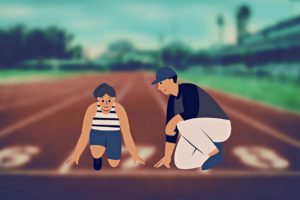Do you remember the books you read as a child? The stories that transported you to magical worlds and introduced you to new characters? Now, imagine if those books only featured characters who looked and acted exactly like you. Would you have felt as connected to the story?
Representation in children’s literature is crucial for building inclusive readers and fostering empathy in young minds.
In this article, we will explore the importance of diversity in children’s books. We will discuss the need for more representation, the benefits of inclusive literature, and provide tips for incorporating diversity into your child’s reading material.
As a parent or educator, it is your responsibility to ensure that the books you provide for children accurately reflect the diverse world we live in.
So, let’s dive in and discover how diverse books can help create a more inclusive and empathetic generation of readers.
Key Takeaways
- Representation in children’s literature is crucial for building inclusive readers and fostering empathy in young minds.
- Including diverse characters and stories creates a more inclusive literary landscape and fosters empathy and understanding among young readers.
- Advocating for diversity in education can lead to improved academic performance and engagement, as well as a more inclusive and equitable learning environment for all students.
- Book selection is key to building an inclusive library that reflects the diversity of our world, by choosing age-appropriate books that avoid stereotypes and represent diverse groups in a positive light.
Understanding the Impact of Representation in Children’s Literature
Understanding the impact of representation in children’s literature can’t be ignored if we want to create a more inclusive and empathetic generation of readers.
When children see characters that look like them, have similar experiences, and come from the same cultural background, they feel seen and heard. This representation impact can be powerful in shaping a child’s identity and sense of self.
On the other hand, a lack of representation or misrepresentation can be damaging to a child’s self-esteem and understanding of the world around them.
This is why it’s important for authors and publishers to prioritize cultural sensitivity and accuracy in their children’s books. By including diverse characters and stories, we not only create a more inclusive literary landscape but also foster empathy and understanding among young readers.
It’s a small but important step in building a better, more connected society.
The Need for Diversity in Children’s Books
You need to understand the importance of diversity in children’s books because it reflects the real world.
By featuring diverse characters, authors are able to meet the needs of diverse readers who are often underrepresented in literature.
Furthermore, including diversity in children’s books fills the representation gap and helps to create a more inclusive society.
Reflecting the Real World
Hey, have you ever read a book that accurately represented the diverse world we live in? It’s time we start reflecting reality in children’s literature to create inclusive readers who feel seen and valued. When children see characters that look like them, speak their language, or have similar experiences, they are more likely to engage with the story and develop a love for reading. Portraying reality in children’s books is not only important for representation but also for promoting empathy. When children are exposed to diverse perspectives, they learn about different cultures, beliefs, and experiences, which in turn helps them understand and respect others.
To better understand the lack of diversity in children’s books, let’s take a look at the numbers. According to a study by the Cooperative Children’s Book Center, out of the 3,400 children’s books published in 2018, only 50% featured human characters, and only 10% featured diverse characters. Furthermore, only 7% of children’s books were written by authors of color. This lack of representation in children’s books can have a negative impact on children’s self-esteem, sense of belonging, and ability to empathize with others. We need to do better and actively seek out diverse books that reflect the reality of the world we live in.
Meeting the Needs of Diverse Readers
Ensuring that diverse readers feel seen and valued in literature is vital for fostering empathy and understanding of different cultures and experiences. When children see themselves reflected in the books they read, it helps them develop a positive self-image and a sense of belonging. It also helps them understand and appreciate the experiences of others who may be different from them.
However, it’s not enough to simply include diverse characters in children’s books. It’s important to address stereotypes and celebrate differences in a respectful and authentic way. Addressing stereotypes means challenging assumptions and biases that may be present in children’s literature. For example, books that feature only certain types of characters or portray certain cultures in a negative light can perpetuate harmful stereotypes.
On the other hand, celebrating differences means highlighting the unique qualities and strengths of different cultures and identities. This can help children develop a sense of curiosity and appreciation for the world around them. By creating books that both address stereotypes and celebrate differences, we can help build a more inclusive and understanding society.
Filling the Representation Gap
By including underrepresented characters and stories in literature, we can bridge the representation gap and promote empathy for those whose experiences may differ from our own.
Children’s books play a crucial role in shaping young minds, and it’s essential that they reflect the diverse world we live in. When children see characters who look like them and experience similar trials and triumphs, it can boost their self-esteem and sense of belonging.
On the other hand, when children see characters who don’t look like them, it can encourage them to seek out new perspectives and broaden their horizons. Unfortunately, the representation gap in children’s literature is still prevalent, with many books featuring only white, heterosexual, able-bodied characters.
This lack of diversity can harm marginalized groups by perpetuating stereotypes and limiting opportunities for representation and visibility. By filling the representation gap with diverse characters and stories, we can create a more inclusive and equitable world for all children to grow up in.
It’s crucial that authors, publishers, and educators work together to ensure that children’s literature reflects the rich tapestry of our world.
The Benefits of Inclusive Children’s Literature
Including diverse characters in children’s literature creates a sense of belonging and empathy for all readers. When children see themselves represented in books, they feel validated and seen. Similarly, when children see characters from different backgrounds, they learn to appreciate and understand different perspectives. This promotes empathy and helps children develop a sense of inclusivity towards others.
Moreover, inclusive children’s literature expands perspectives. It exposes children to different cultures, traditions, and beliefs, creating an opportunity for them to learn about the world beyond their own experiences. This exposure can help children develop a global mindset, which is increasingly important in today’s interconnected world.
By reading about diverse characters and experiences, children can learn to appreciate and celebrate differences, rather than fear or reject them. Ultimately, reading diverse children’s literature can help build more inclusive, empathetic, and informed young readers.
Tips for Incorporating Diversity in Children’s Books
You can easily diversify your child’s book collection by seeking out stories featuring characters from different backgrounds and cultures. Book selection is key to building an inclusive library that reflects the diversity of our world.
When selecting books, consider the age appropriateness of the content and the themes presented. Look for books that introduce diverse cultures and experiences in a sensitive and respectful way. Cultural sensitivity and language use are also important factors to consider when selecting diverse books.
Choose books that avoid stereotypes and represent diverse groups in a positive light. When reading aloud to your child, take the time to discuss any unfamiliar cultural or linguistic concepts presented in the story. This will help your child gain a deeper understanding and appreciation for different cultures and languages, and foster a love of reading that celebrates diversity.
The Role of Parents and Educators
When it comes to creating an inclusive learning environment for children, parents and educators play a crucial role.
One important way to promote diversity is by choosing books that feature diverse characters and perspectives. Additionally, encouraging discussions about these topics can help children understand and appreciate different cultures and experiences.
Finally, advocating for diversity in education can lead to systemic change and a more inclusive learning environment for all.
Choosing Diverse Books
Diversifying your child’s bookshelf can open up a world of perspectives and experiences they may not have otherwise encountered. When choosing diverse books, it’s important to find representation and resources for discovering children’s books that feature characters from different backgrounds and cultures. Look for books that feature diverse authors, illustrators, and characters to ensure that your child is exposed to a variety of perspectives.
However, it’s important to note that when choosing diverse books, there may be pushback from others who are resistant to change or uncomfortable with discussing issues of race and diversity. Navigating controversy and addressing pushback when choosing diverse books can be challenging, but it’s essential to have these conversations with your child.
Encourage them to ask questions and engage in dialogue about the themes and ideas presented in the books they’re reading. By choosing diverse books and discussing them openly, you can help your child become a more inclusive reader and a more empathetic person overall.
Encouraging Discussion
Now that you’ve learned how to choose diverse books for your children, it’s time to take the next step and encourage discussion.
By talking with your children about the characters and themes in the books they’re reading, you can help them develop empathy and promote understanding of different cultures and experiences.
Encouraging empathy in children is crucial for building inclusive readers who can relate to others outside of their own experiences. By discussing diverse books with your children, you can help them see the world through the eyes of someone who’s different from them. This can promote understanding and compassion for people from all walks of life.
Here are some bullet points to help evoke an emotional response in you:
- Seeing the world from a different perspective can be eye-opening and life-changing.
- Developing empathy is an important step towards becoming a kind and compassionate person.
- Discussion can help children understand and appreciate the diversity of the world around them.
- Reading diverse books can help break down stereotypes and promote tolerance.
- Encouraging discussion can create a safe and open environment for children to learn about and discuss important issues.
Promoting understanding is another important goal of discussing diverse books with your children. By talking about the themes and messages in these books, you can help your children understand the experiences of others and the challenges they face. This can lead to a deeper understanding of the world and a greater appreciation for the diversity of people and cultures.
So, take the time to sit down with your children and discuss the books they’re reading. You might be surprised at what you can learn from them!
Creating Inclusive Learning Environments
By fostering an environment that promotes acceptance and celebrates differences, educators can ensure that all students feel valued and included in the learning process. Creating inclusive classrooms is essential in promoting cultural awareness and building a sense of community among students. One way to achieve this is by incorporating diverse literature into the curriculum. By providing students with books that feature characters from different backgrounds and experiences, educators can expose them to a variety of perspectives and help them understand the value of diversity.
To further promote inclusivity, educators can also incorporate activities that encourage students to share their own cultural experiences and traditions. This can be done through classroom discussions, presentations, or even food tastings. By creating a safe and welcoming space for students to share and learn about each other’s cultures, educators can foster a sense of respect and understanding among their students. By taking these steps, educators can create an environment that not only promotes academic success but also prepares students for the diverse world they will encounter outside of the classroom.
| Benefit of Creating Inclusive Classrooms | Example Activities | Impact on Students |
|---|---|---|
| Promotes cultural awareness | Classroom discussions, presentations, food tastings | Understanding and respect for different cultures |
| Fosters a sense of community | Group projects, team building activities | Collaboration and teamwork skills |
| Encourages critical thinking | Analysis of diverse literature, debates | Broadened perspectives and enhanced analytical skills |
| Builds empathy and compassion | Role-playing activities, community service projects | Increased understanding and compassion for others |
Advocating for Diversity in Education
You can make a difference in the lives of your students by actively advocating for the inclusion of diverse perspectives and voices in the curriculum. The challenges faced in advocating for diversity in education can be daunting, but the rewards are immeasurable.
By presenting students with a range of experiences and viewpoints, you can help them to develop a deeper understanding of the world around them and promote empathy and understanding.
One of the most important reasons to advocate for diversity in education is the importance of representation. When children see themselves reflected in the books they read and the lessons they learn, they feel seen and valued. This can have a profound impact on their self-esteem and their sense of belonging, which in turn can lead to improved academic performance and greater engagement in the classroom.
Additionally, exposure to diverse perspectives can help students to develop critical thinking skills and broaden their understanding of different cultures and experiences. By advocating for diversity in education, you can help to create a more inclusive and equitable learning environment for all students.
The Responsibility of Writers
As writers, we have a crucial responsibility to promote diversity in children’s books, helping to build inclusive readers who are empathetic and accepting of all people.
By incorporating diverse perspectives in our stories, we can provide representation for marginalized groups and help children understand and appreciate different cultures, races, religions, and abilities.
As writers, we should strive to create characters that reflect the world we live in, including characters from different backgrounds and experiences.
We must also be mindful of stereotypes and biases in our writing and work to challenge them. It’s important to do research and consult with individuals from diverse backgrounds to ensure that our portrayals are accurate and respectful.
By taking on this responsibility, we can not only create more inclusive readers but also promote social justice and equity in our society.
Frequently Asked Questions
What are some common stereotypes found in children’s literature that contribute to a lack of diversity?
Common stereotypes in children’s literature include white, male, straight, able-bodied, and middle-class characters. These stereotypes limit children’s exposure to diverse perspectives and experiences, creating a narrow view of the world. When children only see themselves represented in books, they may feel that they are the only ones who matter, which can lead to a lack of empathy for others.
Incorporating diverse characters and perspectives in children’s books can help build inclusive readers who are open-minded and empathetic. By appreciating the differences that make our world a rich and colorful place, children can learn to understand and respect others who may be different from them.
How can parents and educators ensure that children’s books accurately represent diverse cultures and experiences?
When it comes to book selection for children, it’s important to keep cultural sensitivity in mind. As a parent or educator, you have the power to ensure that the books you choose accurately represent diverse cultures and experiences.
One way to do this is by researching and seeking out books written by authors from different backgrounds. You can also look for books that feature diverse characters and storylines that showcase a variety of experiences and perspectives.
It’s crucial to avoid stereotypes and caricatures that perpetuate harmful and inaccurate representations of different cultures. By prioritizing cultural sensitivity in your book selection, you can help build a more inclusive and empathetic generation of readers.
What barriers exist for marginalized authors and illustrators in the children’s book industry?
Marginalized authors and illustrators in the children’s book industry face a range of challenges that prevent them from achieving representation and equal opportunity. These challenges include limited access to publishing networks, a lack of diversity in editorial staff, and a bias towards the dominant cultural norms.
As a result, representation gaps persist in children’s literature, with many stories and perspectives left untold. Despite these barriers, there’s a growing movement towards promoting diversity and inclusion in children’s books. Initiatives aimed at amplifying marginalized voices and creating more opportunities for underrepresented authors and illustrators are gaining traction.
How can children’s books be used as a tool for promoting empathy and understanding among young readers?
To promote empathy and understanding among young readers, children’s books must prioritize inclusive storytelling. By featuring diverse characters and experiences, children can develop a greater sense of empathy and understanding for those who may be different from themselves. This type of storytelling can also help to break down stereotypes and prejudices that children may have internalized.
It’s important for authors and publishers to recognize the impact that children’s books can have on shaping young minds, and to actively seek out and promote diverse voices and perspectives. By doing so, we can create a generation of readers who are more compassionate and empathetic towards others, and who are better equipped to navigate a complex and diverse world.
Are there any negative consequences of not incorporating diversity in children’s literature?
If you’re not incorporating diversity in children’s literature, you’re doing a disservice to young readers. The negative consequences of a lack of diversity in children’s literature are clear: it perpetuates harmful stereotypes and reinforces biases.
By not including diverse characters and stories, you’re limiting young minds and their understanding of the world. Representation matters, and when children see themselves reflected in literature, it can boost their self-esteem and sense of belonging.
Conversely, not seeing oneself represented can lead to feelings of marginalization and exclusion. It’s crucial to prioritize diversity in children’s literature to foster inclusive readers and shape a more equitable society.
Conclusion
Congratulations! You’ve reached the end of this article on the importance of diversity in children’s books. By now, you understand how representation in literature can impact a child’s sense of self-worth and belonging, and why it’s crucial to have diverse characters and stories in children’s books.
Remember, diversity is not just about race and ethnicity, but also includes representation of different abilities, cultures, religions, and family structures.
As a parent or educator, you play a vital role in introducing children to diverse literature and encouraging them to explore new perspectives. And if you’re a writer, it’s your responsibility to create inclusive stories that reflect the real world.
By building a collection of diverse children’s books, you can help create inclusive readers who are more empathetic, open-minded, and ready to embrace the world around them.
So keep reading, keep exploring, and keep celebrating diversity in all its forms!

















